A Tribute to Ursula K. LeGuin
I wanted to share some paintings I did this year for a new release of The Left Hand Of Darkness by Ursula K. LeGuin. They have been under wraps until recently, and now that the book is available, I’m excited to finally get the chance to share them! The paintings were done as interior illustrations for an Illustrated Limited Edition of the book through Easton Press / MBI, Inc.
While I have so many ideas about the presentation of these in terms of a live exhibition of some sort (the originals are from 8×10” to 20×30” in size) including notes and sketches and iterations of paintings that ultimately didn’t get used as final images, that kind of presentation here would be a bit much, as I’ve discovered while writing this post and having unpacked my experience on this journey once again. During the process of creating these pieces, I wrote a ton. I experimented with capturing atmosphere and mood in paint, and went through several painting iterations for what would eventually become the finished pieces. My development process usually comes in the form of writing and reading first – and during too, of course, but in the case of things such as ideation, I often write more than anything else. Well, write and experiment, painting abstracts, and/or drawing meditations as well. This has become more of a constant flow for me, as the different projects I’m working on, commissions, and shows are all intertwined in my day-to-day. So, when I was focused on these paintings for a time, much of what I was getting from these was crossing over into my other work to some degree as well.
So.. I’ve decided instead of bombarding the blog here by unpacking all those bits and pieces, I thought I’d share the finished paintings in the order that they are in the book, with some highlights and a couple painting sketches – but there’s no way that I will be able to include all of the notes, thoughts, and key elements. If you haven’t read the book, I’ve included these highlights in a way that it should still make sense, but I do suggest reading the book as well. If you have read the book, you may notice that I might’ve left out quite a bit in these highlights. It’s… a lot. But like I mentioned earlier, I intend to include much more of that in an exhibition of some kind in the future.
Here are a couple of the many painting sketches/abstract environments I did. Some of them have remained as is, and some became the underpaintings for the finishes or other iterations:
First, a bit about the beginning…
I was invited to take this project around this time last year. As the New Year came about, we had agreed on the 8 areas I’d chosen to illustrate, and I was well into writing quite a bit, experimenting with compositions/frames, moods and texture/overall look/feel – making abstracts of all different sizes inspired by key words and phrases as well as visuals I got as I read (and listened to the audio version). My own visuals at first were in the form of words, and were further exposing quite a bit to me about how personal a connection I had to so much of what Ursula writes (as do many, I’m certain). Believe it or not, I actually fought that pretty hard in the beginning. Yes, you read that right. Me. I fought that. The person who puts personal connection into her work on a regular basis. Yeah, I wrote a lot about that too, but no need to share that all here, I think. I wrote notes to Ursula not even knowing if I had any intention of sending them along somehow, but really was curious to be able to converse with her in some way about the discoveries and connection I was making. And then the sad news came that she had passed away. I wrote her a letter – a posthumous thank you of sorts – which of course also was never sent except by way of the ether as it were. I only now have revisited it as I’ve decided to share these paintings and process here, and would like to share the letter to her here as well because I think it applies to so much of what we do and what we are.
Dear Ursula,
Even if I’ve never met you, I feel so very much as if I have. You may already know this, but I’ve been making images with you as the impetus, and I have felt a great sense of purpose by having been doing this. I will admit it hasn’t been an easy task so far, and sometimes it’s felt as if there is no end in sight – and that’s just it. There isn’t. And that’s the peculiar and amazing beauty of it. By way of your words, you’ve left your spirit in all of us who were lucky enough to have our minds cracked open and our worlds expanded into infinity because of you. I promise to try my very best along this journey to always keep the stove on in the tent, and to share it with those who’ll have my company.
Rest in peace. Your vision is not lost on us. It goes on forever.
___________________________
“Few foreigners are so foreign as I, Lord Tibe. I am very grateful for kindness.”
We are presented to a new world by way of the POV of the man arriving to this new world alone. It’s notably chaotic, and probably was the toughest to nail down in the ideation stage out of the 8 paintings for me. Even though this is the first image in the book, I didn’t paint this one until closer to the end. It becomes clear later, and in hindsight is absolutely brilliant how we are made to feel out of place at this early stage of the story. Just as the main character from whose POV we are experiencing the world, we are shown that it’s in our nature (especially in Western society) to seek consistency and sameness – a familiar or rational pattern of some sort – and there isn’t one. While this world celebrates individuality, the arch and a keystone being set in it during a parade are key here to help support us in finding some sort of hint at unity as well, and that unity and individuality co-existing is possible and essential. I’ve illustrated the two beings, new to each other, showing that though they are right next to each other, are the farthest apart two beings could possibly be. This cycles back around, but in a different and new way, after the journey, and is shown in the last illustration of the 8.
__________________________
“Tell them at Shath that I take back my name and my shadow.”
This is one of the myth chapters and uses a shadow as a curse, that is eventually lifted. Two brothers meet in this Place Inside The Blizzard – one is dead and one is living and were in love when both were alive and vowed fidelity which was forbidden. It will end up being one of the main recurring narratives throughout – a complicated love between two characters, a balance of opposites. The Left Hand is mentioned here, and will be mentioned again throughout the rest of the book as well.
__________________________
“I serve as a filament…The energy builds up and builds up in us, always sent back and back, redoubling the impulse every time, until it breaks through and the light is in me, around me, I am the light.”
I loved the description of the group of Foretellers as “hooded stones”. This stuck with me and I was hooked on that visual. This was one of the first images that I worked up, and it made its way to me through a dream. I woke up in the middle of the night, went up to my studio, painted this (below) in the wee quiet hours of the very early morning, and went back to bed:
I liked the energy of it well enough, but I ultimately did not end up using this start. This is a good example of the different iterations I was talking about earlier. This is one of many iterations I painted of several of these images.
_________________________
He put out his hand and touched Estraven’s hand as if he were making certain that the frost was driven out. At the touch…he felt the fire waken in himself. So for a while both held still, their hands touching.
“They are the same,” said Stokven, and laying his palm against Estraven’s showed it was so: their hands were the same in length and form, finger by finger, matching like the two hands of one man laid palm to palm.
“I have never seen you before,” Stokven said. “We are mortal enemies.”
In this moment, these two mortal enemies share a warm shelter from the frozen outside world and are keenly attune to their connection as familiar beings – to their similarities despite their territorial, socially and historically appointed differences. This is a myth chapter, and the story cycles back around again in this chapter alone, and also shows us that this is the nature of life and experiences.
_________________________
“The life of every man is in the Center of Time, for all were seen in the Seeing of Meshe, and are in his Eye. We are the pupils of his Eye. Our doing is his Seeing: our being his Knowing.”
I was struck most by all of the imagery and visuals I got from this chapter – also a myth chapter, and though short, is packed with layers of metaphor and motif nonetheless. We are given a glimpse of a one way of seeing – a permanent enlightenment that precedes the following couple chapters in which darkness is the equivalent of evil and despair – which is actually not necessarily the case in most of the rest of the book where light and dark – a balance of the two – is essential to our existence.
________________________
“What does it matter which country wakens first, so long as we waken?”
“Teach me your mindspeech…your language that has no lies in it. Teach me that, and then ask me why I did what I’ve done.”
Bottom line: doing things for the benefit of the greater good happens on a personal level. Embody the change you want to see in the world. (I had written a lot more here, but that’s the essence of it all right there). Also, this image is hugely inspired by the way in which we see forms in clouds. I did several iterations of this, all more abstractly as figures in clouds, to give the effect they sort of disappear and appear in the clouds and atmosphere, and the edges between the figures are blurred as well, lifting up from the darkness and the (abstract) figures huddled below. The color in Ai’s body has nearly left him, as Estraven lifts him up, brings life back to him and carries him until he is well again.
________________________
“I thought it was for your sake that I came alone, so obviously alone, so vulnerable, that I could in myself pose no threat, change no balance: not an invasion, but a mere messenger-boy. But there’s more to it than that. Alone, I cannot change your world. But I can be changed by it. Alone, I must listen, as well as speak. Alone, the relationship I finally make, if I make one, is not impersonal and not only political: it is individual, it is personal, it is both more and less than political. Not We and They; not I and It; but I and Thou. Not political, not pragmatic, but mystical.”
“It is yin and yang. Light is the left hand of darkness…Light, dark. Fear, courage. Cold, warmth. Female, male. It is yourself, Therem. Both and one. A shadow on snow.”
I chose to paint this one – specifically focused on the relationship of the two as they journeyed across The Ice – as an homage to Leo and Diane Dillon’s cover illustration for the 1st edition of The Left Hand Of Darkness in 1969. Their illustration includes so many of the elements especially from this area of the story, and I view it as a reflection of what my intent is including the abstract in my own work, metaphorically speaking of important elements that are also abstract or conceptual in nature. Those areas are meant to be left vaguely defined, as one might see hints of things as glimpses, reminders, concepts, even hallucinations (as is the case in this part of their journey) so that the viewer has room for their own individual perceptions and familiar interpretations of these elements as well, and because of the very nature of their abstract quality, those perceptions and interpretations are open to evolve or change while the abstracts actually remain the the same.
Here is the Dillons’ cover illustration:
_____________________________
“Will you tell us how he died? – Will you tell us about the other worlds out among the stars – the other kinds of men, the other lives?”
The arch and keystone return as a subtle metaphor in this last chapter for the connection and unity of all. “I must accomplish the thing he died for. I must set the keystone in the arch.” I hint at this as well with the stars dispersed in an arch in the sky from the landing of the ship to the unknown, new areas open for exploration – the worlds out among the stars. Estraven and Ai are the most distant in terms of the physical sense that two could ever be, but closer now than ever before. And Estraven’s legacy lives on in the young son who asks to hear stories of the other kinds of men, the other lives…
Here is a glimpse of my notes (also written to Ursula) regarding the day this image came to me (also by way of a dream) the night after she passed away:
Yesterday, an image finally came to me – it was one I had been struggling with exactly how to tackle it in the simplest of terms, but without leaving anything out. Capturing the moment one gains profound love, but also loses it in that same moment. And then it came to me last night, and I had this sudden urgency to get this one image out.
I don’t believe in coincidences. I really don’t. There is a reason I’m doing this, and I have much work to do. Though you will never see these images, you are there in every one, and now others may even see you as I do – having never met in person, but with me there in these paintings. We all are. Here, you are Estraven and we are Ai, and we have our stories to share.
And so it goes…
The Left Hand of Darkness Limited Illustrated Collector’s Edition is available through Easton Press here.


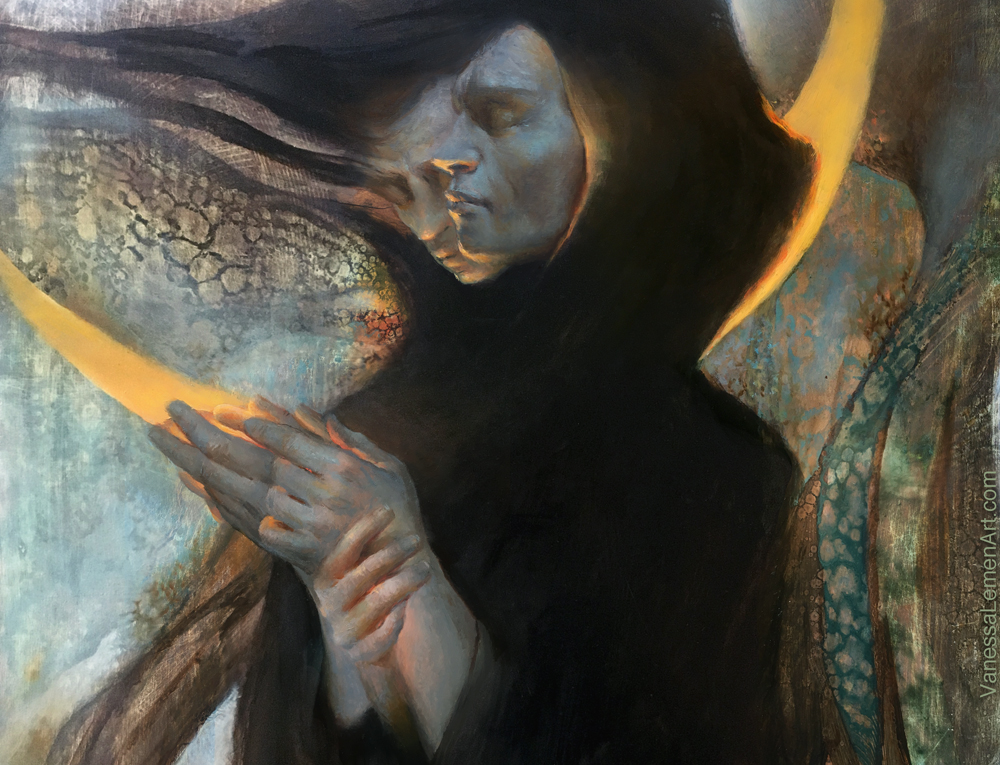
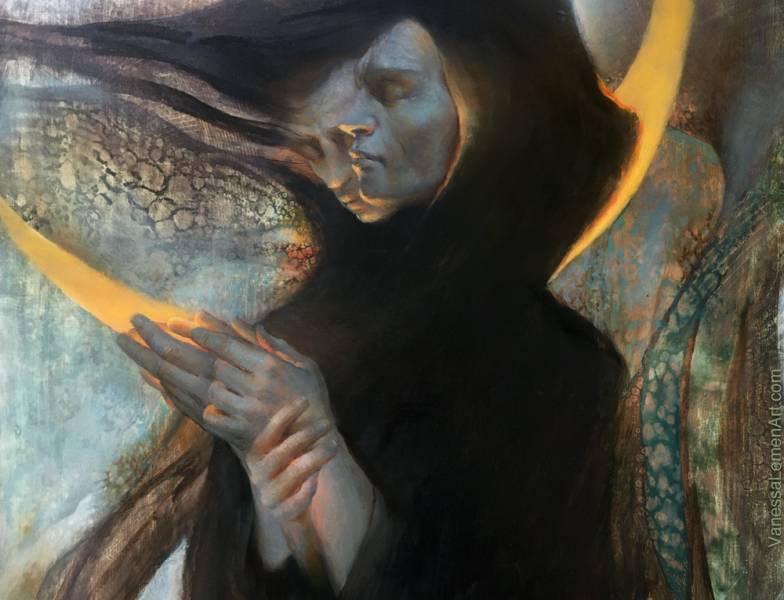
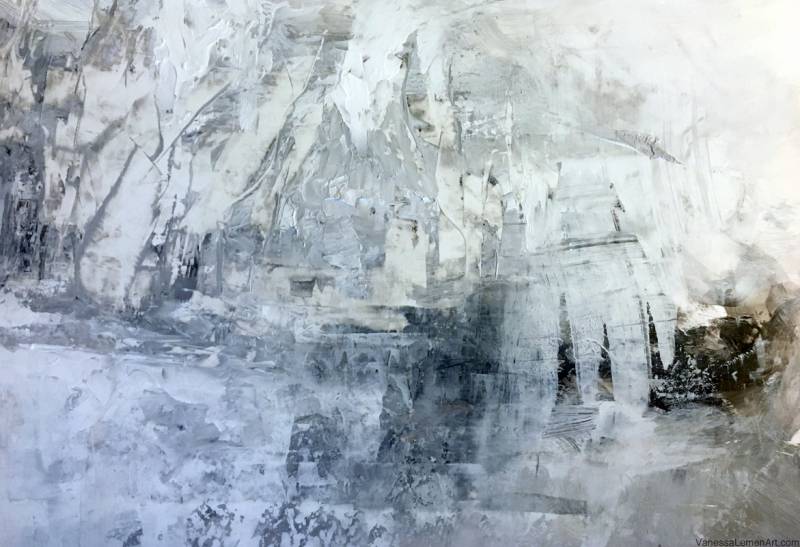
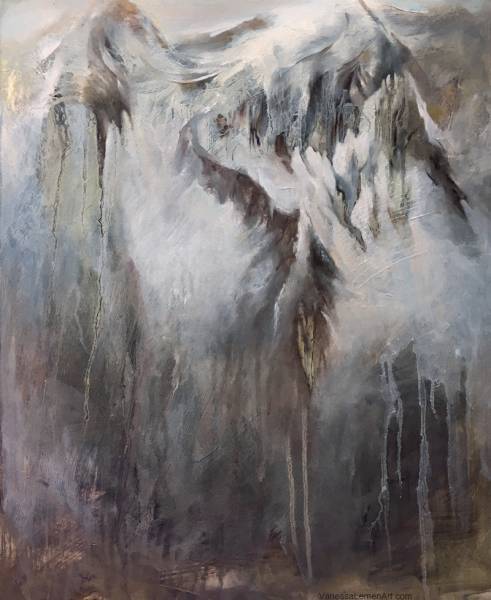
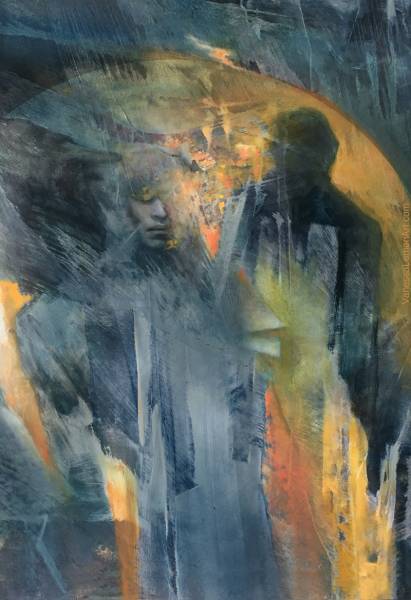
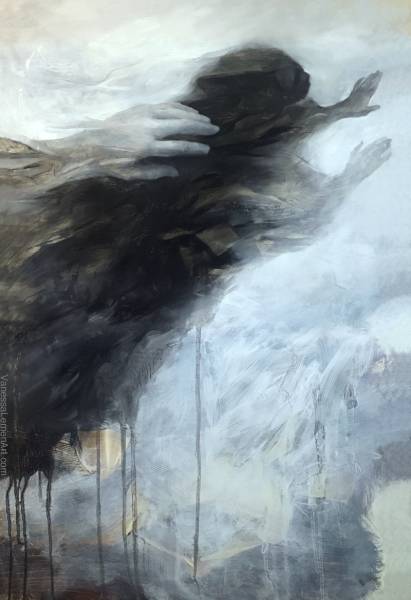
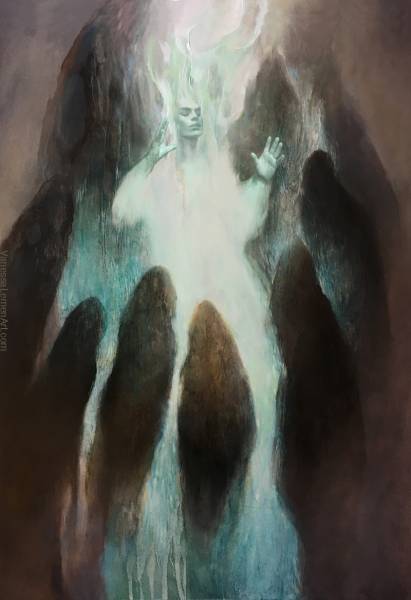
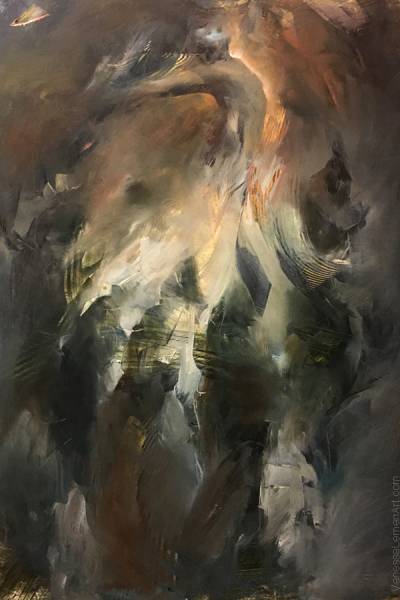
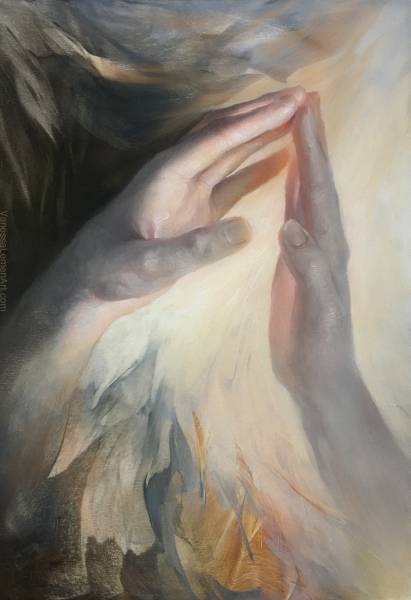
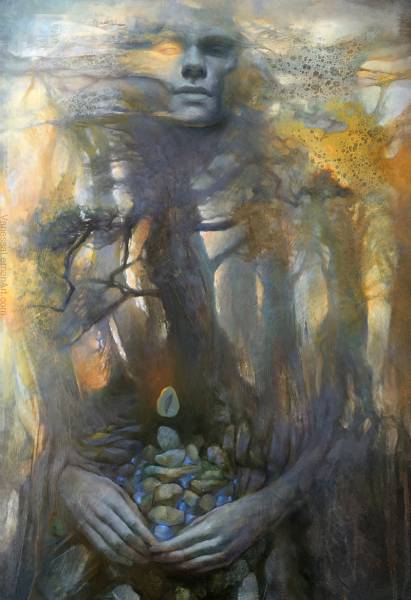
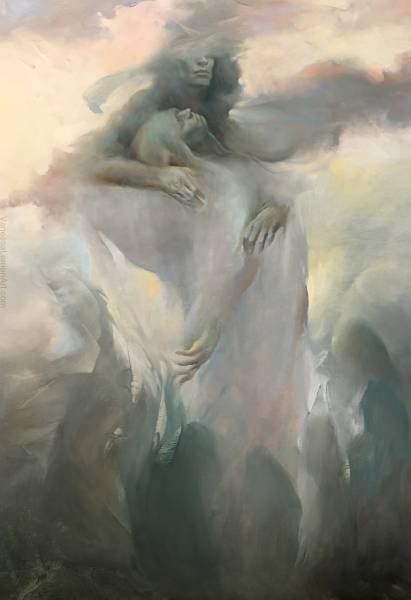
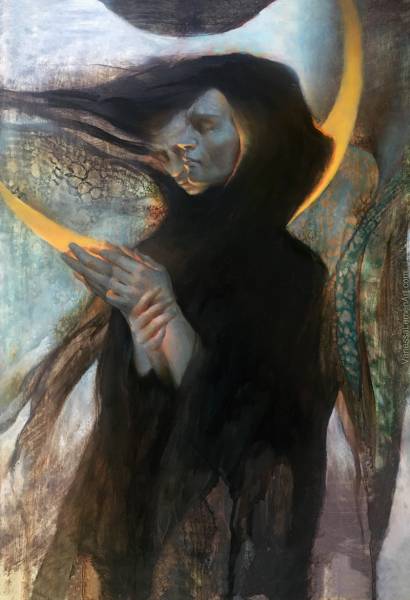
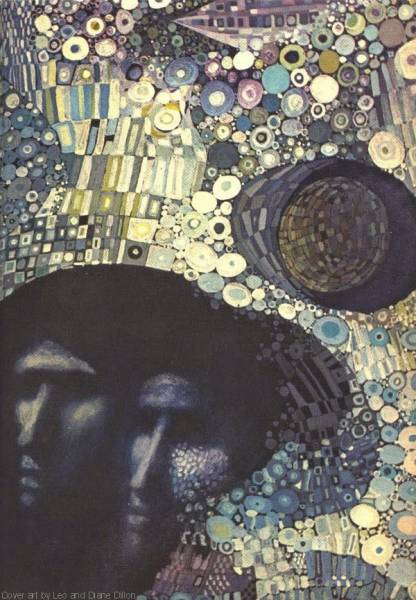
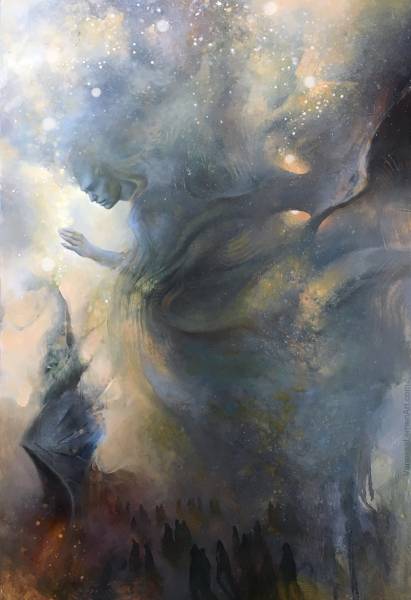
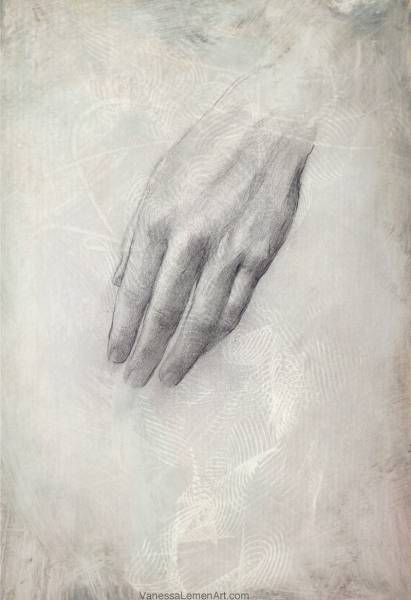
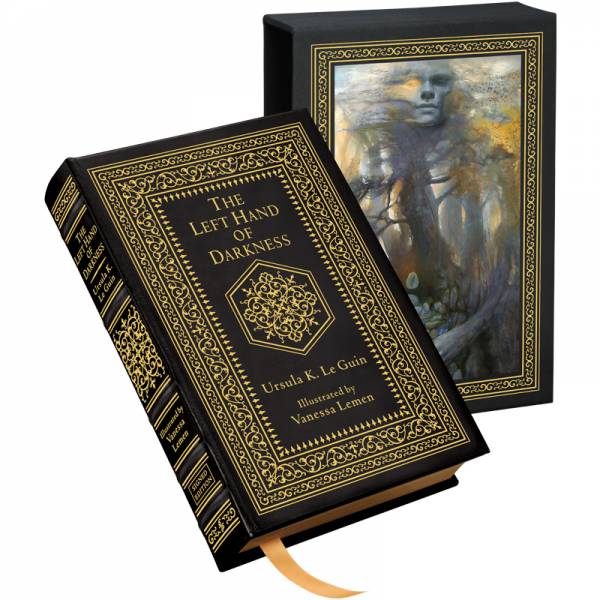
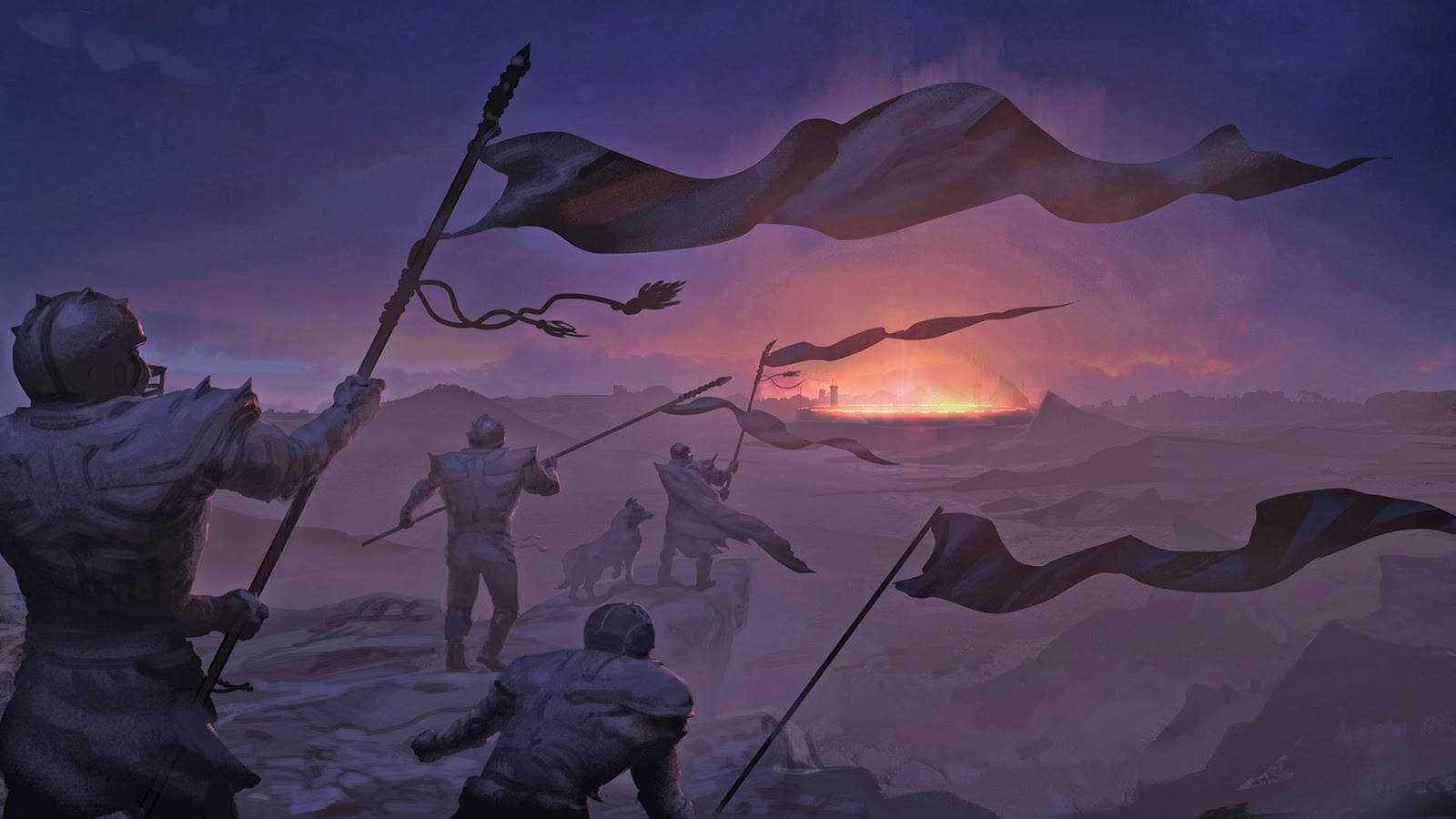
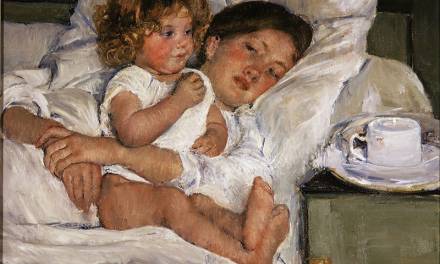
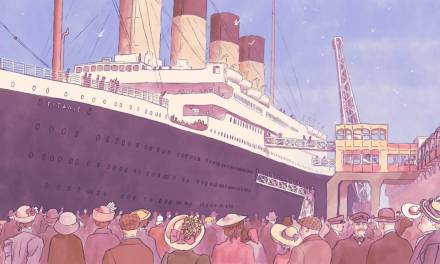
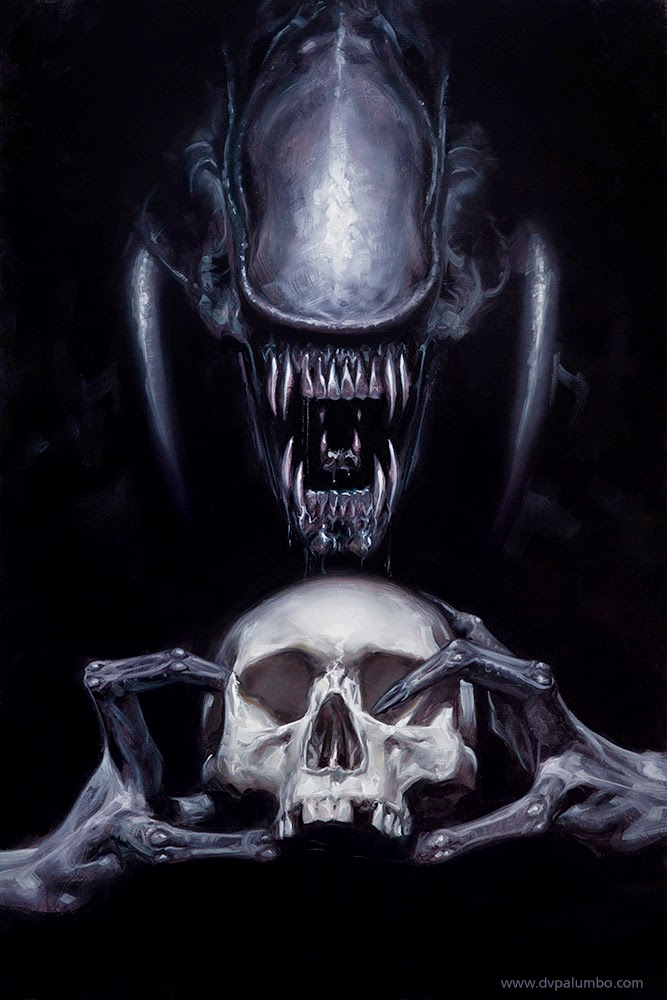

Awesome and inspiring!
hi Scott- I’m so glad to hear that- Thank you! 🙂
The Paintings took my breath. Keep up the good work.
hi Elisa- Thanks so much. So great to hear the paintings felt that way to you. 🙂
I love both your work and Ursula’s – and what you’ve done here is stunning. It’s dreamy and ambiguous in a way that makes me think how perfectly fitting it is to the book itself, in ways I couldn’t have imagined. Thank you for sharing some of the process. The unsent notes to Ursula, this sort of conversation you continue to have with her in a sense, is especially moving.
hi Eleni- Thank you so much for the insight- I’m so happy that, as a fan of Ursula’s work, you feel that my paintings are so fitting, and even in an unexpected way. It means so much to me. And I’m so glad you found the conversation moving. Thank you again. 🙂
Beautiful work, Vanessa! Thank you for including your thoughts behind each piece.
hi David- Thanks so much for the nice words about my work. And I’m glad you enjoyed the thoughts in the post too. 🙂
Stunning work, Vanessa. I find Center of Time and Both and One especially compelling.
hi Beth- Thank you! I’m glad to hear there are a couple that are especially captivating to you as well. 🙂
I have learned from Spectrum page that you have made these illustrations, so I have waited until I finish the book (yesterday on my way from Zürich to Hamburg) – I still feel the cold…
And now I am looking at them- I must say that there’s an eclipse to my vision. But I could never paint it this way. Your interpretation is definitely another window, has its own character; it’s Ursula. Congratulations for your work-
All the bests-
Wow Amazing
Are you looking for a crafting gaming application with incredible features to show a classic world of creativity under the crafting experience
bitAIM+ AI Aim Assistance Carrom. An AI System help You To Practice All Masters Shots And Make You A Proffesional Carrom Player.
PPTGet.com is a quick and user-friendly online downloader that lets you to download slides infographics, presentations, and other documents from SlideShare.
SlideShare is now one of the best platforms to share documents, presentations, infographics and educational content over many different subjects.